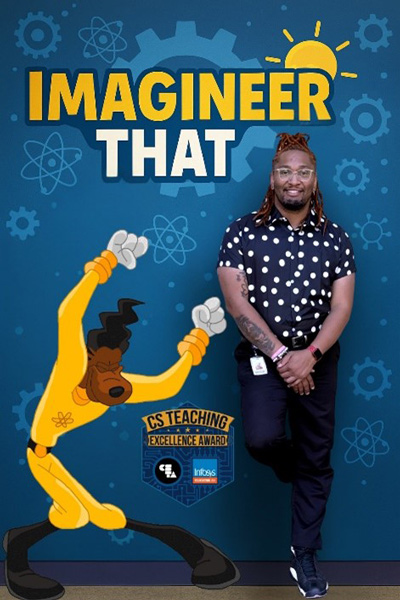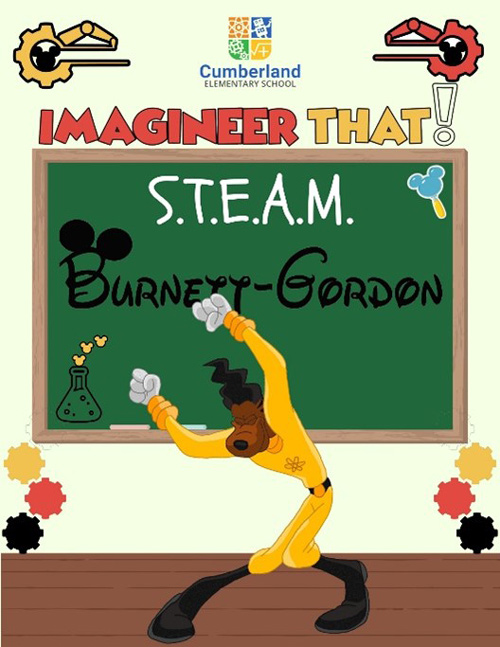PowerMoves Lab: The CS Stage Where Every Step Codes a Story
By J.C. De’ Marko V. Burnett-Gordon - CS Teaching Excellence Award Winner 2024-2025
June 12, 2025
As a former high school dance educator for over a decade (12 years) turned K–5 STEAM and Computer Science teacher, I’ve made it my mission to blend movement, mindset, and meaning into every learning experience. I know what it means to choreograph a performance—but this year, I found myself choreographing an entirely new vision for how children engage with Computer Science.
That vision came to life through the launch of my signature instructional experience:
PowerMoves Lab: The CS Stage Where Every Step Codes a Story. Inspired by Powerline. Powered by Purpose. Designed for Every Dreamer.
In the PowerMoves Lab, students don’t just sit at a screen—they become the algorithm. They explore CS concepts like loops, sequencing, pattern recognition, and debugging through Laban Movement Analysis (LMA) and Language of Dance (LOD) Motif Notation. These are not just tools for dance—they are powerful frameworks that help students visualize and physically embody the structure of code.
What began as a spark of curiosity turned into a full-on STEAM fire. I used my adapted Imagineering Framework—Dream It. Design It. Do It.—inspired by Walt Disney Imagineering—to scaffold this experience. Each phase invites students to ideate, innovate, and implement in ways that are culturally relevant, arts-integrated, and rooted in real-world expression.
In the ‘Dream It’ phase, students imagine their movement “code” and develop a narrative or theme. In ‘Design It’, they experiment with LOD motif symbols and map out their sequences like computational algorithms. Finally, in ‘Do It’, they bring their ideas to life—through physical performance, robotics, or block-based coding.
This structure offers both rigor and joy. It helps students move from stillness to expression—intellectually and physically. The idea for this lab was directly influenced by the book Stillness: Why Don’t You Move?, which challenged me to think critically about how we teach presence, discipline, and reflection in motion. It helped me recognize the power of stillness as an intentional command—just like a pause or a wait function in a code.
Through ongoing training with Language of Dance USA, I expanded my use of motif notation not just as a dance language, but as a CS literacy tool—a bridge between body and logic, creativity and computation. Students learned to see a motif phrase the same way they see a string of code: with purpose, pattern, and potential.
One lesson that encapsulated the power of this lab involved students laying out LOD motif cards on the floor—each representing a movement command or symbol. They had to collaboratively build an “algorithm” that would be performed by a peer, then revise it if the sequence didn’t produce the intended result. From there, students journaled about their embodied coding experience and compared how digital logic and human movement intersect.
We weren’t just learning Computer Science—we were living it through rhythm, repetition, and remix.
What made this even more powerful was watching students who normally hesitate in math or tech-based tasks light up with confidence and connection. For many, especially those historically excluded from STEM learning environments, the PowerMoves Lab was an invitation to belong. To create. To be seen. To stand out.
And that’s exactly the heart of my work. Teaching Computer Science through movement isn’t about turning every student into a dancer—it’s about showing every student that CS is for them. It’s about equity, access, and embodied understanding. It’s about moving past screens and into story. I believe Computer Science should be a place where identity thrives, not hides.
Receiving the CS Teaching Excellence Award was more than recognition—it was affirmation. It validated a dream I had years ago: that a Black, male dance educator could help redefine what Computer Science looks like and feels like in elementary spaces. It affirmed that when we center student voice, honor diverse learning styles, and lead with creativity, we all have the chance to stand out above the crowd.
I’ve carried the message of Powerline with me for years—my forever spirit character from A Goofy Movie. As the world celebrates the film’s 30th anniversary, I reflect on how his message became mine:
“If we listen to each other’s heart, we’ll find we’re never too far apart.”
That’s what I teach. That’s what I live. And that’s what this award means to me.
The PowerMoves Lab is more than a teaching tool—it’s a movement in itself. One that blends dance and data, storytelling and structure, culture and code. And it’s only the beginning.
Thank you for considering my submission. I would be honored to share more about the joy of teaching Computer Science through movement, and what it means to build classroom stages where every student’s code—and voice—can shine.




